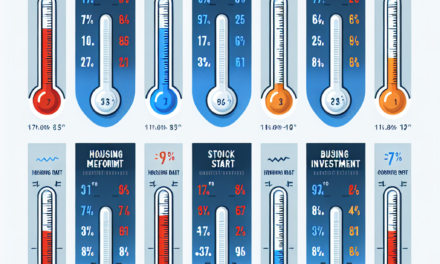“Powering the Future: EV Battery Belt Towns Look to Trump for Support.”
Introduction
The emergence of electric vehicle (EV) manufacturing has given rise to a new economic landscape in the United States, particularly in regions dubbed the “Battery Belt.” These towns, strategically located near key resources and manufacturing hubs, are poised to become critical players in the EV supply chain, focusing on battery production and assembly. As the Biden administration pushes for a transition to cleaner energy and increased EV adoption, local leaders in these areas are looking to garner support from influential figures, including former President Donald Trump. His backing could be pivotal in securing federal investments, infrastructure development, and policy support that would bolster the growth of the EV industry and create jobs in these communities. The intersection of politics and economic opportunity in the Battery Belt highlights the importance of leadership in shaping the future of sustainable transportation in America.
Economic Impact of the EV Battery Belt on Local Communities
The emergence of the electric vehicle (EV) battery belt in the United States is poised to significantly reshape the economic landscape of local communities, particularly in regions that have historically relied on traditional manufacturing and fossil fuel industries. As the demand for electric vehicles surges, driven by both consumer preferences and regulatory pressures aimed at reducing carbon emissions, towns situated along this burgeoning battery supply chain are experiencing a transformative economic impact. This shift not only promises job creation but also fosters a new sense of identity and purpose for these communities.
In the heart of the EV battery belt, towns are witnessing an influx of investment from major automotive and technology companies eager to establish manufacturing facilities. This influx is not merely a boon for local economies; it represents a fundamental shift in the types of jobs available. High-tech manufacturing positions, which often require specialized skills, are replacing traditional roles in industries such as coal and steel. Consequently, local educational institutions are adapting their curricula to prepare the workforce for these new opportunities, emphasizing the importance of technical training and STEM education. This alignment between education and industry needs is crucial for ensuring that residents can take advantage of the jobs created by the EV battery sector.
Moreover, the economic impact extends beyond direct employment opportunities. As new businesses emerge to support the EV battery industry, ancillary services such as logistics, maintenance, and supply chain management are also on the rise. Local entrepreneurs are seizing the moment to establish businesses that cater to the needs of the growing workforce, from housing developments to restaurants and retail shops. This diversification of the local economy not only enhances community resilience but also fosters a vibrant atmosphere that attracts new residents and visitors alike.
However, the transition to an EV battery economy is not without its challenges. Communities must grapple with the potential for economic displacement as traditional industries decline. The shift necessitates a concerted effort to ensure that workers from these sectors are not left behind. Policymakers and community leaders are tasked with creating programs that facilitate retraining and upskilling, ensuring that the workforce can transition smoothly into the new economy. This proactive approach is essential for maintaining social cohesion and preventing economic disparities from widening.
Furthermore, the environmental implications of the EV battery belt cannot be overlooked. While the shift to electric vehicles is a step toward reducing greenhouse gas emissions, the production of batteries involves mining and processing materials that can have detrimental effects on local ecosystems. Communities must engage in discussions about sustainable practices and environmental stewardship to mitigate these impacts. By prioritizing responsible sourcing and production methods, towns can position themselves as leaders in sustainable manufacturing, further enhancing their appeal to environmentally conscious consumers and investors.
As the EV battery belt continues to develop, the role of political support becomes increasingly critical. Local leaders are looking to figures like former President Donald Trump, who has expressed interest in revitalizing American manufacturing, to champion policies that will bolster the growth of this sector. The alignment of political will with community aspirations can create a powerful synergy that drives economic development while addressing the challenges that accompany such a significant transition.
In conclusion, the economic impact of the EV battery belt on local communities is profound and multifaceted. As towns adapt to this new reality, they stand at the crossroads of opportunity and challenge. By embracing innovation, investing in education, and fostering sustainable practices, these communities can not only thrive in the new economy but also serve as models for others navigating similar transitions. The future of the EV battery belt holds promise, contingent upon the collective efforts of local leaders, businesses, and residents to harness its potential for lasting economic growth.
Trump’s Role in Shaping the Future of EV Battery Manufacturing
As the electric vehicle (EV) industry continues to expand, towns across the United States, particularly those in the so-called “Battery Belt,” are increasingly looking to political figures for support in shaping their economic futures. Among these figures, former President Donald Trump has emerged as a pivotal player in the discourse surrounding EV battery manufacturing. His influence is particularly significant in regions that are positioning themselves as key players in the burgeoning market for electric vehicles and their components. The Battery Belt, which stretches from Michigan to the southeastern states, is home to numerous communities that are banking on the growth of this industry to revitalize their economies.
Trump’s administration previously emphasized the importance of American manufacturing and energy independence, which resonated with many communities that have historically relied on traditional manufacturing jobs. As the demand for EVs surges, these towns are eager to pivot towards battery production, which is seen as a critical component of the EV supply chain. The former president’s advocacy for domestic manufacturing aligns with the aspirations of these communities, as they seek to attract investments from major automakers and battery manufacturers. This alignment creates a unique opportunity for towns in the Battery Belt to leverage Trump’s influence to secure federal support and funding for infrastructure improvements and workforce development.
Moreover, Trump’s stance on trade policies has implications for the EV battery sector. His administration’s focus on reshoring manufacturing jobs and reducing reliance on foreign suppliers has led to discussions about tariffs and incentives for domestic production. Towns in the Battery Belt are keenly aware of how these policies can affect their local economies, as they strive to create a competitive environment for attracting investment. By advocating for policies that favor American-made products, Trump has the potential to bolster the growth of battery manufacturing in these regions, thereby creating jobs and stimulating economic development.
In addition to economic policies, Trump’s engagement with the EV sector also encompasses environmental considerations. While his administration was often criticized for its approach to climate change, the growing emphasis on electric vehicles presents an opportunity for a renewed dialogue about sustainable practices. Towns in the Battery Belt are increasingly recognizing the importance of balancing economic growth with environmental stewardship. By supporting initiatives that promote clean energy and sustainable manufacturing processes, Trump could play a crucial role in shaping a more environmentally friendly future for the battery industry.
Furthermore, the political landscape surrounding EVs is evolving, with bipartisan support emerging for the transition to electric vehicles. This shift presents an opportunity for Trump to align himself with a broader movement that transcends party lines. By championing the interests of Battery Belt towns, he can position himself as a leader in the transition to a greener economy while simultaneously addressing the economic concerns of his constituents. This dual focus on economic revitalization and environmental responsibility could enhance his appeal among voters who prioritize both job creation and sustainability.
In conclusion, as towns in the Battery Belt look to the future of EV battery manufacturing, Trump’s role in shaping policies and fostering investment will be critical. His influence can help these communities navigate the complexities of the evolving automotive landscape, ensuring that they remain competitive in a rapidly changing market. By advocating for domestic manufacturing, supporting sustainable practices, and engaging with a bipartisan audience, Trump has the potential to significantly impact the trajectory of the EV industry and the economic fortunes of towns across the Battery Belt.
Job Creation in Battery Belt Towns: Opportunities and Challenges
As the electric vehicle (EV) industry continues to expand, towns situated in the so-called “Battery Belt” are experiencing a surge of interest and investment. This region, which stretches from the Midwest to the Southeast, is becoming a focal point for battery manufacturing and related industries. The promise of job creation in these towns is significant, yet it is accompanied by a set of challenges that must be addressed to ensure sustainable growth. The potential for economic revitalization is palpable, particularly in areas that have historically relied on traditional manufacturing jobs, which have diminished over the years.
The influx of EV manufacturers and battery production facilities is expected to create thousands of jobs, ranging from skilled labor positions to high-tech engineering roles. For instance, companies like General Motors and Ford are investing heavily in battery plants, which not only boosts local employment but also attracts a network of suppliers and service providers. This ripple effect can lead to a robust local economy, as new businesses emerge to support the growing industry. Moreover, the demand for a skilled workforce presents an opportunity for educational institutions to adapt their curricula, offering training programs that align with the needs of the EV sector. By fostering partnerships between industry and education, towns can ensure that their residents are equipped with the necessary skills to thrive in this evolving job market.
However, while the prospects for job creation are promising, challenges remain that could hinder the realization of these opportunities. One significant concern is the potential for a skills gap, as many workers in these towns may not possess the technical expertise required for the new roles being created. Addressing this gap will require a concerted effort from local governments, educational institutions, and businesses to develop training programs that are accessible and relevant. Additionally, the rapid pace of technological advancement in the EV sector means that ongoing education and retraining will be essential to keep the workforce competitive.
Another challenge lies in the environmental implications of battery production. The extraction of raw materials, such as lithium and cobalt, raises concerns about sustainability and the ecological impact on local communities. As towns in the Battery Belt seek to attract investment, they must also consider the long-term effects of industrialization on their environment. Striking a balance between economic growth and environmental stewardship will be crucial for maintaining community support and ensuring that the benefits of job creation do not come at an unacceptable cost.
Furthermore, the political landscape plays a significant role in shaping the future of these towns. The support of influential figures, such as former President Donald Trump, could be pivotal in securing federal funding and incentives for the development of the EV industry. Local leaders are keenly aware that political backing can enhance their efforts to attract investment and create jobs. However, they must also navigate the complexities of policy changes and economic fluctuations that can impact the stability of the industry.
In conclusion, the Battery Belt towns stand at a crossroads, with the potential for significant job creation on the horizon. While the opportunities are abundant, they are accompanied by challenges that require thoughtful planning and collaboration among various stakeholders. By addressing the skills gap, prioritizing environmental sustainability, and leveraging political support, these communities can position themselves to not only benefit from the EV revolution but also to create a resilient and thriving economy for the future. The journey ahead will demand innovation and adaptability, but the rewards could be transformative for the towns that embrace this new era of manufacturing.
Infrastructure Development in EV Battery Belt Regions
As the electric vehicle (EV) market continues to expand, the regions known as the “Battery Belt” are emerging as critical hubs for infrastructure development. These areas, primarily located in the southeastern United States, are witnessing a surge in investment aimed at bolstering the production and supply chain of EV batteries. This transformation is not merely a response to market demands; it is also a strategic initiative to position the U.S. as a leader in the global EV landscape. Consequently, local governments and communities are increasingly reliant on federal support, particularly from influential political figures, to facilitate this growth.
The Battery Belt encompasses states such as Tennessee, Kentucky, and Georgia, where numerous battery manufacturing plants and EV assembly facilities are being established. This influx of industry has prompted a need for enhanced infrastructure, including transportation networks, utilities, and workforce development programs. For instance, the construction of new highways and rail lines is essential to ensure that raw materials can be efficiently transported to manufacturing sites and that finished products can reach consumers swiftly. Moreover, the demand for reliable energy sources is paramount, as battery production is energy-intensive. Therefore, investments in renewable energy infrastructure, such as solar and wind farms, are becoming increasingly important to support sustainable manufacturing practices.
In addition to physical infrastructure, the development of a skilled workforce is crucial for the success of the Battery Belt. As companies set up operations in these regions, they require a pool of trained workers who can meet the technical demands of battery production and assembly. Local educational institutions are responding by creating specialized training programs and partnerships with industry leaders. These initiatives aim to equip residents with the necessary skills, thereby fostering economic growth and reducing unemployment in the region. However, the success of these programs often hinges on the availability of funding and support from federal and state governments.
In this context, the role of political leadership cannot be overstated. Towns within the Battery Belt are looking to figures like former President Donald Trump for support in securing federal investments and policies that favor the growth of the EV sector. Trump’s administration previously emphasized the importance of American manufacturing and energy independence, which resonates with the aspirations of communities striving to become key players in the EV market. Local leaders are hopeful that by aligning their interests with those of influential politicians, they can attract the necessary resources to enhance their infrastructure and workforce capabilities.
Furthermore, the push for infrastructure development in the Battery Belt is not solely about economic growth; it also reflects a broader commitment to environmental sustainability. As the world shifts towards greener technologies, the production of EVs and their batteries is seen as a vital step in reducing carbon emissions and combating climate change. By investing in infrastructure that supports the EV industry, these towns are not only positioning themselves for economic success but are also contributing to a more sustainable future.
In conclusion, the infrastructure development in the EV Battery Belt regions is a multifaceted endeavor that requires collaboration between local communities, educational institutions, and political leaders. As these towns strive to capitalize on the burgeoning EV market, their reliance on federal support becomes increasingly evident. With the right investments and policies in place, the Battery Belt has the potential to become a cornerstone of the American manufacturing landscape, driving both economic growth and environmental progress.
Environmental Considerations for EV Battery Production
As the demand for electric vehicles (EVs) continues to rise, the production of batteries has become a focal point in the transition to sustainable transportation. However, the environmental implications of EV battery production are complex and multifaceted, raising important considerations for towns within the emerging “Battery Belt.” These communities, which are strategically positioned to benefit from the burgeoning EV market, are increasingly aware of the environmental challenges associated with battery manufacturing.
One of the primary concerns is the extraction of raw materials necessary for battery production, such as lithium, cobalt, and nickel. The mining processes for these minerals can lead to significant ecological disruption, including habitat destruction, water pollution, and soil degradation. For instance, lithium extraction often involves the use of large quantities of water, which can strain local water resources, particularly in arid regions. As towns in the Battery Belt seek to attract investment and create jobs in the EV sector, they must also grapple with the potential environmental costs of sourcing these critical materials.
Moreover, the production of batteries is energy-intensive, contributing to greenhouse gas emissions if the energy used is derived from fossil fuels. This raises questions about the overall sustainability of EVs, which are often marketed as a cleaner alternative to traditional vehicles. To address these concerns, towns are increasingly advocating for the adoption of renewable energy sources in battery manufacturing processes. By utilizing solar, wind, or hydroelectric power, these communities can mitigate the carbon footprint associated with battery production, aligning their economic ambitions with environmental stewardship.
In addition to energy consumption, the lifecycle of EV batteries presents further environmental challenges. Once batteries reach the end of their useful life, proper disposal and recycling become critical issues. Improper disposal can lead to hazardous waste, while effective recycling can recover valuable materials and reduce the need for new mining operations. As towns in the Battery Belt position themselves as leaders in the EV industry, they are also exploring innovative recycling technologies and partnerships to ensure that battery waste is managed responsibly. This proactive approach not only addresses environmental concerns but also creates additional economic opportunities in the recycling sector.
Furthermore, community engagement and public awareness play vital roles in shaping the environmental policies surrounding battery production. As residents of Battery Belt towns become more informed about the implications of EV battery manufacturing, they are increasingly advocating for sustainable practices and transparency from manufacturers. This grassroots movement can influence local regulations and encourage companies to adopt environmentally friendly practices, thereby fostering a culture of sustainability within the industry.
In conclusion, while the growth of the EV market presents significant economic opportunities for towns in the Battery Belt, it is essential to consider the environmental implications of battery production. By addressing the challenges associated with raw material extraction, energy consumption, and battery disposal, these communities can work towards a more sustainable future. As they navigate this complex landscape, the support of political leaders, including figures like Donald Trump, may play a crucial role in shaping policies that balance economic growth with environmental responsibility. Ultimately, the success of the Battery Belt will depend not only on its ability to attract investment but also on its commitment to sustainable practices that protect the environment for future generations.
Political Implications of Trump’s Support for Battery Belt Towns
As the electric vehicle (EV) industry continues to expand, towns situated along what has been dubbed the “Battery Belt” are increasingly looking to political figures for support, particularly former President Donald Trump. The Battery Belt, which stretches from Michigan to Alabama, is home to numerous manufacturing facilities dedicated to producing batteries for electric vehicles. This region has become a focal point for economic development, job creation, and technological innovation. However, the political landscape surrounding this burgeoning industry is complex, and the implications of Trump’s support could significantly influence the future of these towns.
Trump’s endorsement of the Battery Belt towns could serve as a catalyst for economic growth and investment. His administration previously emphasized the importance of American manufacturing and energy independence, themes that resonate strongly in the context of the EV industry. By advocating for policies that favor domestic production of EV batteries, Trump could attract both public and private investment to the region. This influx of capital would not only bolster local economies but also create jobs, thereby enhancing the livelihoods of residents who depend on these industries for their economic stability.
Moreover, Trump’s support could also have broader political implications. The Battery Belt towns are often situated in swing states, making them critical battlegrounds in national elections. By aligning himself with the interests of these communities, Trump could solidify his base among voters who prioritize job creation and economic revitalization. This alignment may also encourage local leaders to rally behind him, fostering a sense of unity that could translate into increased voter turnout in future elections. Consequently, the political ramifications of his support extend beyond immediate economic benefits, potentially shaping the electoral landscape in significant ways.
In addition to economic and electoral considerations, Trump’s support could influence the regulatory environment surrounding the EV industry. The former president has historically favored deregulation, which could appeal to manufacturers seeking to streamline operations and reduce costs. If Trump were to advocate for policies that minimize regulatory burdens on battery production, it could enhance the competitiveness of Battery Belt towns in the global market. This, in turn, would position these communities as leaders in the transition to electric vehicles, further entrenching their importance in the national economy.
However, the political implications of Trump’s support are not without challenges. The EV industry is also closely tied to environmental concerns, and Trump’s past positions on climate change have drawn criticism from various quarters. As towns in the Battery Belt seek to balance economic growth with environmental sustainability, they may find themselves navigating a complex political landscape. Local leaders will need to consider how to align their economic aspirations with broader environmental goals, particularly as public sentiment increasingly favors sustainable practices.
In conclusion, the political implications of Trump’s support for Battery Belt towns are multifaceted and significant. His endorsement could drive economic growth, influence electoral dynamics, and shape regulatory policies in ways that benefit these communities. However, the interplay between economic development and environmental sustainability will require careful navigation. As these towns look to the future, they must weigh the potential benefits of political support against the broader implications for their communities and the environment. Ultimately, the decisions made in this context will have lasting effects on the trajectory of the Battery Belt and its role in the evolving landscape of American manufacturing and energy.
Case Studies: Success Stories from EV Battery Belt Communities
As the electric vehicle (EV) industry continues to expand, towns within the so-called “Battery Belt” are emerging as pivotal players in this transformative landscape. These communities, primarily located in the Midwest and South, are witnessing a surge in economic activity and job creation, largely due to the burgeoning demand for EV batteries. Notably, several towns have become case studies of success, showcasing how strategic investments and local initiatives can lead to significant advancements in the EV sector.
One exemplary case is the town of Lordstown, Ohio, which has undergone a remarkable transformation in recent years. Once heavily reliant on traditional automotive manufacturing, Lordstown faced economic challenges as the industry evolved. However, the arrival of Lordstown Motors, an electric vehicle manufacturer, has revitalized the local economy. The company’s commitment to producing electric trucks has not only created hundreds of jobs but has also attracted a network of suppliers and ancillary businesses to the area. This influx of investment has reinvigorated the community, demonstrating how a shift towards sustainable technology can yield substantial economic benefits.
Similarly, in Kentucky, the city of Glendale has positioned itself as a hub for battery production. The establishment of a large-scale battery manufacturing facility by a major automotive supplier has catalyzed growth in the region. This facility is expected to create thousands of jobs and has prompted local educational institutions to develop specialized training programs aimed at equipping the workforce with the necessary skills for the EV industry. By fostering partnerships between businesses and educational entities, Glendale is not only addressing immediate labor needs but is also ensuring long-term sustainability and innovation within the community.
In addition to these examples, the town of Montgomery, Alabama, has also made significant strides in the EV battery sector. With the announcement of a new battery plant by a prominent global manufacturer, Montgomery is set to become a key player in the supply chain for electric vehicles. This development is particularly noteworthy as it aligns with the city’s broader economic diversification strategy, which aims to reduce reliance on traditional industries. The local government has actively supported this transition by providing incentives for businesses and investing in infrastructure improvements, thereby creating an environment conducive to growth and innovation.
Moreover, the success stories from these towns are not merely anecdotal; they reflect a broader trend across the Battery Belt. Communities are increasingly recognizing the importance of adapting to the changing landscape of transportation and energy. By embracing the EV revolution, these towns are not only securing their economic futures but are also contributing to a more sustainable environment. The shift towards electric vehicles is seen as a critical step in reducing carbon emissions and combating climate change, and towns that invest in this transition are positioning themselves as leaders in the green economy.
As these communities continue to thrive, they are also looking towards political support to further bolster their initiatives. The potential backing from influential figures, such as former President Donald Trump, could play a crucial role in securing additional funding and resources for these towns. With the right support, the success stories emerging from the Battery Belt can serve as a blueprint for other regions seeking to capitalize on the EV industry. In conclusion, the experiences of Lordstown, Glendale, and Montgomery illustrate the transformative power of the electric vehicle sector, highlighting how strategic investments and community engagement can lead to sustainable economic growth and environmental stewardship.
Q&A
1. **What are “Battery Belt” towns?**
Battery Belt towns are communities in the U.S. that are focusing on the production and supply of electric vehicle (EV) batteries, often benefiting from investments in battery manufacturing and related industries.
2. **Why are these towns counting on Trump’s support?**
These towns are hoping for support from Trump due to his influence in politics and potential policies that could favor manufacturing and job creation in the EV sector.
3. **What specific policies are these towns seeking?**
They are seeking policies that promote domestic manufacturing, tax incentives for battery production, and infrastructure investments to support EV growth.
4. **How does Trump’s stance on EVs impact these towns?**
Trump’s stance on EVs, which has fluctuated between support and skepticism, can significantly influence federal funding and investment in battery manufacturing in these regions.
5. **What economic benefits do Battery Belt towns expect?**
They expect job creation, increased local investment, and economic growth from the establishment of battery manufacturing facilities and related supply chains.
6. **What challenges do these towns face in attracting support?**
Challenges include competition from other regions, fluctuating political priorities, and the need for substantial investment in infrastructure and workforce development.
7. **How are local leaders engaging with Trump and his administration?**
Local leaders are engaging through lobbying efforts, public statements, and participation in events that highlight the importance of battery manufacturing to their communities.
Conclusion
The emergence of EV ‘Battery Belt’ towns highlights the critical intersection of local economies and national policy, with many communities relying on support from political figures like Trump to secure investments and infrastructure necessary for the growth of the electric vehicle industry. As these towns strive to position themselves as key players in the burgeoning EV market, the backing of influential leaders could prove pivotal in attracting the necessary resources and fostering sustainable economic development.





